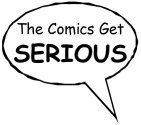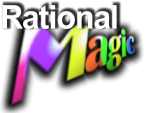

| Kurt Busiek's Astro City: Life in the Big City. Written by Kurt Busiek. Illustrated by Brent E. Anderson. New York: Homage Comics/DC Comics, 1996. 192p. $19.95. ISBN 1-56389-551-X. |
|
GENRES: AUDIENCE: NOTE: This book collects issues #1-6 of Kurt Busiek's Astro City. SYNOPSIS: What Astro City is about, mostly, is the people who inhabit it: the people who live with superheroes passing overhead and the threat of cosmic dangers from gods trying to return to prominence. But the superheroes have lives too, however different from yours or mine. In order, then:
The book includes an extensive introduction by Busiek in which he talks about his rationale for this title; "Infrastructure," which includes sketches of the city and many of the major superheroes; and a cover gallery for the six issues that made up this book. EVALUATION: Marta of Shadow Hill is a little more realistic, but it's hard to believe that having worked in the city for at least several months (apparently), she hasn't been subjected to supervillain attack before now, or at least witnessed some. The message that the dangers of Shadow Hill are really a protection from the dangers she doesn't understand in the City--which is a good insight, actually--would have been much more powerful if she'd just come to the City a short time ago. Maybe it would have helped if the book had focused on fewer characters--there are a lot of people to keep track of in a mere six issues, a lot of hints and teasers, and not enough meat on any one character's bones to make them more than two-dimensional. Also, I can't really determine what makes this book much different from many other superhero titles, save the lesser amount of superfighting and the admittedly interesting setting. The story format reminded me somewhat of the way the stories are presented in the vastly superior Sandman, except that Neil Gaiman had the good sense to focus on a few people (or beings) at a time rather than trying to build up a huge new universe right off the bat. (And Gaiman was far, far better at character. With the possible exception of Winged Victory, there isn't a single person I give a damn about in this title.) And I surely could have done without Busiek's self-congratulatory introduction and "Infrastructure." The art is nice but nothing to jump around about; it's standard superhero stuff, though Anderson's nod to Will Eisner at the beginning of "Reconnaissance" is pleasant. I guess by the standards of superhero comics, Busiek is good at ordinary people. At least he makes them more believable here than he did in the incredibly disappointing Marvels. But I can't help feeling that people are over-impressed with this book. Someone in Comics Journal called it "one of the most well-crafted, life-affirming, and exhilarating superhero comics in recent memory." Maybe this statement refers to later issues, because while the stories in this book are well-crafted, they're hardly exhilarating, and I can't even begin to figure out how they're supposed to be life-affirming. Anyway, also like Marvels, this book is recommended for its reputation alone. For genuinely life-affirming graphic novels, let me direct you to The Desert Peach or Stuck Rubber Baby or Breakthrough or Bughouse or any number of titles reviewed on this website. And I continue on my quest for a superhero book with real human feeling.... |
Return to Rational Magic Home
